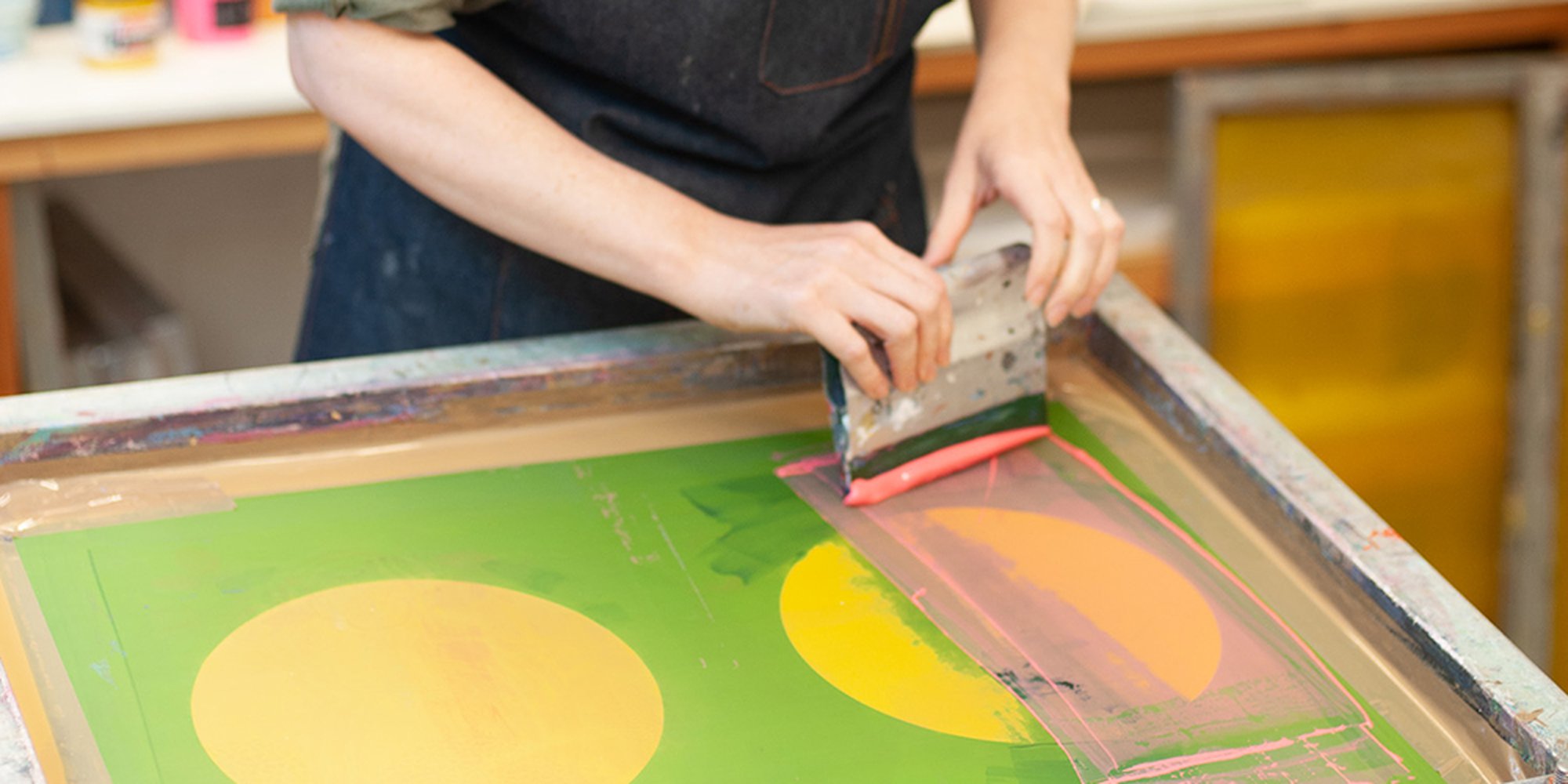ChatGPT said: 10:9 Design Embroidery success stories: how clients boosted their brand identity
The Necessary Overview to Comprehending Screen Printing and Its Versatile Makes use of
Screen printing has a rich history that dates back to old times, advancing right into an innovative strategy made use of across various industries today. This overview discovers the intricacies of the screen printing process, outlining its applications in home, fashion, and marketing decoration - 10:9 Design Embroidery. Understanding these principles can open up innovative possibility for both artistic and commercial projects. The adhering to areas will disclose essential pointers and techniques to improve one's screen printing undertakings
The Background of Screen Printing
Screen printing has roots that map back centuries, its evolution shows the technical and imaginative innovations of numerous societies. Coming from old China, the method was originally made use of for decorating fabrics and later spread to Japan, where it ended up being important to Ukiyo-e woodblock printing. The technique changed to Europe in the 18th century, where it obtained popularity amongst craftsmens and commercial printers. The creation of photo emulsion in the 20th century revolutionized screen printing, allowing for more intricate layouts and greater efficiency. Artists like Andy Warhol even more propelled its appeal, making use of the medium to produce iconic jobs that blended commercialism and great art. By the late 20th century, screen printing had developed itself as a flexible technique, used in fashion, advertising, and fine art. Today, it continues to evolve, integrating digital technology and broadening its applications throughout various markets.
The Screen Printing Process Explained
Screen printing changes imaginative visions into tangible layouts with a series of accurate steps. Initially, a picture is produced and afterwards moved onto a screen, typically constructed from fine mesh textile stretched over a structure. A light-sensitive solution is related to the screen, which is exposed to light, setting in areas not covered by the picture. After rinsing the unhardened emulsion, a pattern is formed.
Next, the screen is put over the substratum, whether it be fabric, paper, or another product. Ink is then pressed through the open locations of the stencil using a squeegee, depositing the design onto the substratum below. This procedure can be repeated for numerous colors, calling for separate displays for each and every hue. The published product is cured using warm to guarantee the ink adheres appropriately, resulting in a long lasting, dynamic style all set for usage.
Kinds Of Screen Printing Techniques

In addition, specialized methods, such as discharge screen printing, eliminate color from the material to develop softer prints, while foil screen printing uses metallic aluminum foil to attain a shiny surface (10:9 Design reviews). Each strategy provides distinct qualities, catering to various imaginative check here demands and production ranges, inevitably increasing the possibilities within the screen printing domain
Applications of Screen Printing in Numerous Industries

In addition, the signage and marketing sectors use screen printing for creating attractive screens and banners. This technique permits strong shades and intricate designs that record interest. In electronics, screen printing is utilized for applying conductive inks to circuit card, crucial for element links. Moreover, the home decoration sector welcomes screen printing to create distinct layouts on textiles and wall surface art. Overall, screen printing offers as a crucial device across diverse areas, enhancing items with personalized and visually attractive graphics.
Tips for Effective Screen Printing Projects
While taking on a screen printing task, cautious focus to detail can significantly improve the last result. Initially, selecting premium products is essential; this includes the screen, inks, and substratums. Utilizing ideal mesh matters can affect ink deposition and detail resolution. Prep work is just as crucial; comprehensive cleansing of displays and appropriate exposure times ensure crisp prints.
Next, exact registration is vital for multi-color prints. Making use of alignment devices can aid accomplish specific layering. In addition, screening prints on scrap products prior to manufacturing assists identify possible concerns without squandering resources.

Regularly Asked Concerns
What Materials Are Ideal for Screen Printing on Fabric?
Cotton and polyester blends are ideal for screen printing on textile because of their sturdiness and ink absorption. Furthermore, specialized textiles like silk or canvas can create special textures and surfaces, boosting the overall design top quality.
Exactly how Do I Clean and Maintain Screen Printing Tools?
To preserve and clean screen printing tools, one should frequently wash screens with ideal solvents, inspect squeegees for wear, lube relocating components, and shop all products in a completely dry, dust-free environment to prolong their life-span.
What Are the Ecological Influences of Screen Printing?
Screen printing can have significant ecological impacts, including chemical waste from inks and solvents, water usage during cleansing processes, and power intake. Sustainable methods and environment-friendly materials are important for reducing these adverse results.
Can Screen Printing Be Done at Home Efficiently?
Screen printing can be properly done at home with the ideal materials and techniques. Hobbyists can develop high quality prints, though success depends upon their ability level, tools, and understanding of the process included.
What Are the Prices Linked With Starting a Screen Printing Business?

Starting a screen printing company entails expenses for tools, materials, and workspace. Preliminary costs commonly range from a couple of hundred to several thousand dollars, depending on the scale, quality of machinery, and desired production ability.
Screen printing has a rich history that dates back to ancient times, progressing into an innovative method made use of across numerous industries today. One more strategy, rotary screen printing, utilizes round displays, helping with continual printing on textile rolls, therefore improving performance for large-scale productions. Additionally, specialty methods, such as discharge screen printing, eliminate dye from the fabric to create softer prints, while foil screen printing applies metal aluminum foil to attain a shiny coating. In the style industry, screen printing is widely utilized to develop vibrant designs on clothing, allowing brand names to display their special styles. Cotton and polyester blends are excellent for screen printing on textile due to their sturdiness and ink absorption.